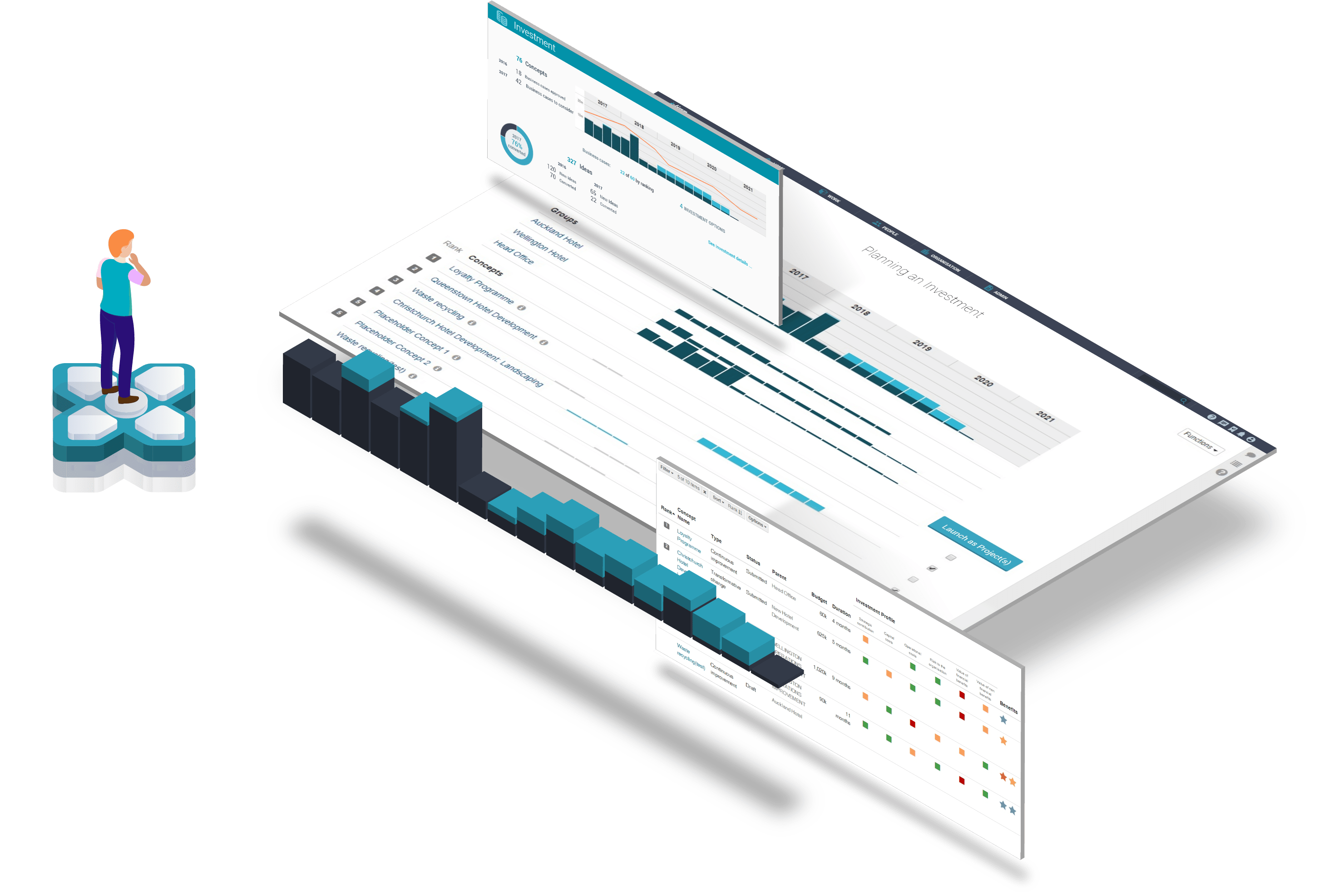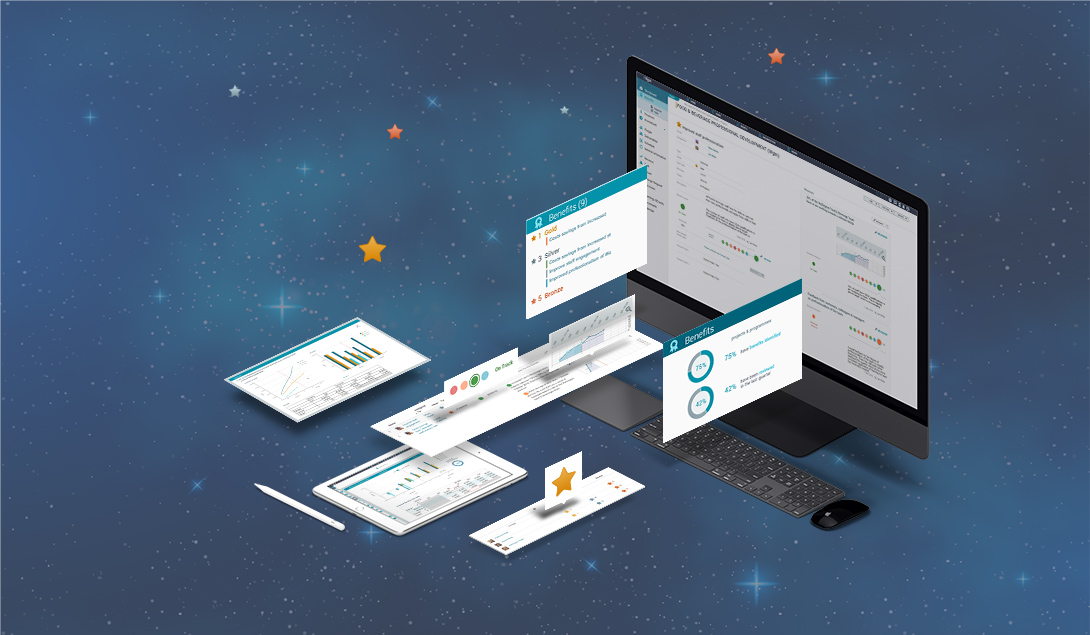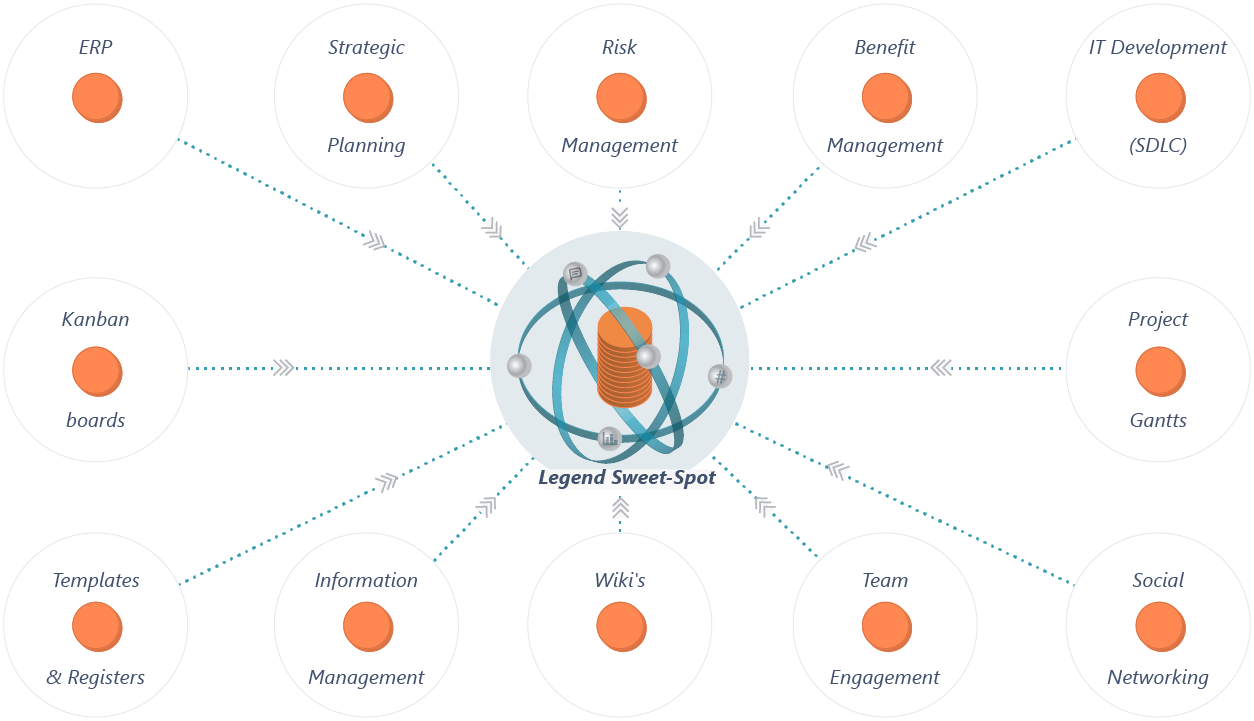Key Features of Investment Lifecycle Approach
- Socialise a planned, logical and visible Investment Lifecycle across the business.
- Strategic Purpose, Strategic Drivers and KPI's provide overall context for investment.
- Launch Ideas, Business Cases, Projects as discrete entities.
- Launch Projects directly from Ideas or Business Cases.
- Align projects and programmes to strategies.
- Project plans and approach reflect the business case, and provide the basis for stakeholder discussions, moving forward.
- Connect Ideas - Business Cases - Projects - Benefits within an enterprise lifecycle.
- Build investment capability, knowledge, IP and continuous improvement through Conversations, Blogs and #tags.
Investment Lifecycle - IDEAS

Ideas from people in all roles, and at all levels of the organization, have the potential to deliver massive value.
Continuous improvement relies on new ideas. The largest areas of new value are largely unseen, and it's those that must be surfaced.
This relies on a management commitment to sponsor new thinking, assess ideas and then take viable ideas through to fruition.
Investment Lifecycle - Business Cases
There are those that say the most important stage in a project is the originating Business Case. You know the business case is wrong if benefits start to erode and costs rise not long after you commence a project. History shows that, even in this case, organizations are so committed to the initiative they can't back out.
The business case needs to be accurate and defensible especially in terms of the benefits projected. It's equally important to see all business cases in the context of the business, and understand their relative worth, and the appetite of the organization to deliver against, and absorb the change from, the organization-wide ‘investment portfolio’.
It's often the business cases that are put on hold that open up the space for those that are approved to be successful.
Investment Lifecycle - Projects
Projects are the change vehicles for many organizations and are critical to business success and growth. Projects will differ in terms of size, complexity, value to the business, and management requirements. The tools you choose to use will depend on all these factors.
Toolkit includes:
- Alignment to Strategies
- Escalation
- Conversations
- #tags
- Status Reviews
- Template generation
- Change Requests
- KanBan Board
- Reports
- Portal
- Registers
- Events
- Meetings
- Documents
- Baselines
- Lifecycles
- Prioritization
Investment Lifecyle - Benefits

organizations expect their investment in both current and new areas of work will generate benefits of some sort. These could be Financial, such as increased profit, or Non-Financial, such as increased staff engagement.
Without ongoing oversight and active management benefits often fail to materialize. Some estimates suggest the project benefit success rates are less than 5 percent. Strong Benefit Ownership and regular Benefit Reviews ensure benefits stay alive from their inception to the point at which they are realized.
Investment Lifecycle
Continuous Improvement & Learning
One of the biggest challenges facing teams is becoming a ‘learning organization’. This is often couched in ‘lessons learned’ or ‘continuous improvement’ language.
This is where technology can play a major role. Imagine an Executive team setting up #Innovation and inviting anyone in the business to use that tag.
Imagine the buzz at their next management meeting when hundreds of innovations reveal themselves on the big screen, with not a paper report in sight. Picture what this might tell them about their people and the way they're thinking about the future. Imagine how this could inform changes in direction, strategy and product development.
This is Learning-in-practice because the technology enablers such as Conversations, Blogs and #tags allow lessons, observations and insights to be recorded in real-time and at source, and shared widely.





